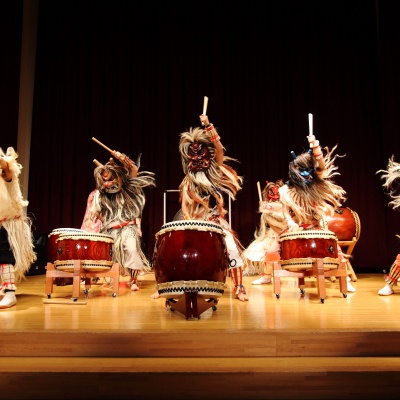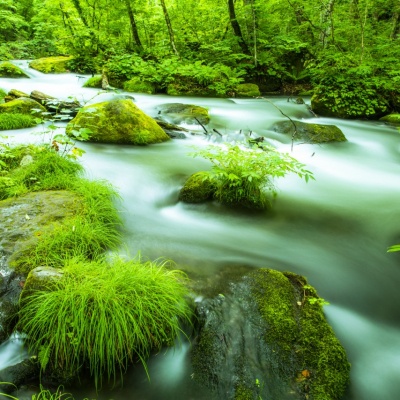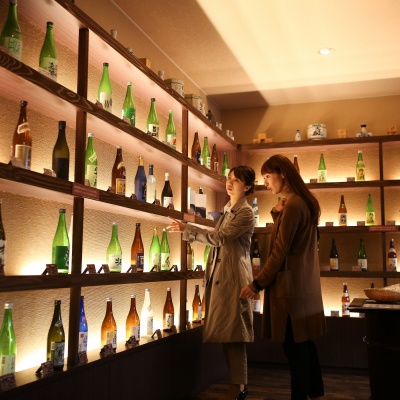3 days/2 nights based in Towada and Oirase Keiryu Onsen [Base! Tohoku]
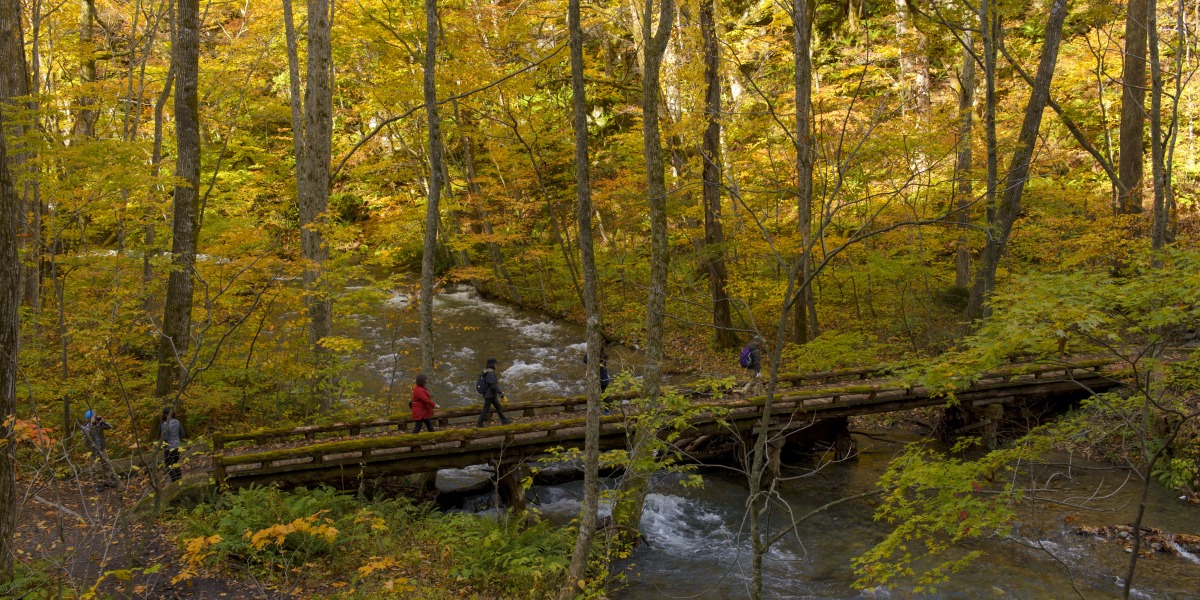
Enjoy the spectacular natural scenery of mountain streams, mountains, lakes, and beaches!
There are many hidden hot springs in this area. Why don't you relax in the hot springs after a long day of walking in the nature?
START
Day1
Oirase Mountain Stream
With two stars in the Michelin Green Guide, this pristine stream is one of the most popular scenic locations in Tohoku
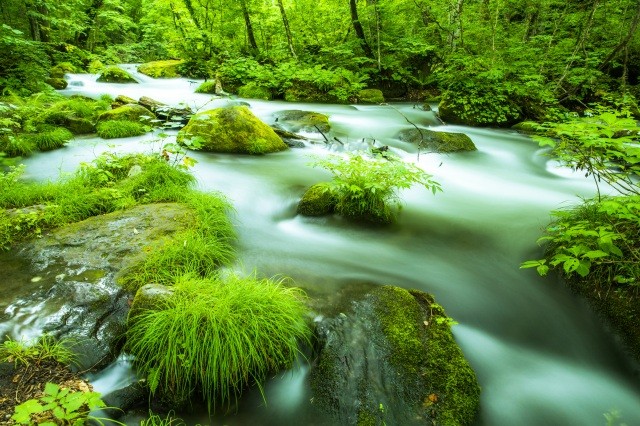
Oirase Mountain Stream is one of the most popular attractions in Tohoku and has been awarded two stars in the Michelin Green Guide. The stream stretching for 14km is home to boundless scenic beauty. The journey between viewing highlights can be made by car or bus however walking the route is particularly recommended in order to enjoy this spectacle to its fullest, the extra time and effort are highly rewarded! While walking through the natural green tunnels of the trail, visitors can appreciate the beauty of the vibrant mosses and foliage, breathe in the forest air, and be dazzled by the dance of the sunshine filtering through the overhead foliage on the sparkling water surface.
Photography enthusiasts in particular should walk from the lower to the upper stream to find the ideal vantage points of the natural light shining on the stream and surrounding foliage. The trail is an easy walk without any challenging climbs. The four-hour full trekking route from the pleasure boat pier of Lake Towada (Nenokuchi bus stop) to Yakeyama bus stop close to the Oirase Stream Museum is as follows:
Nenokuchi - (20min) - Choshi Otaki - (50min) - Kumoi no Nagare - (30min) - Kumoi no Taki - (30m) - Makado Iwa - (15min) – Ishigedo - (70min) - Yakeyama
The best time to enjoy the area’s verdant greens is from mid-May to mid-June. Gorgeous autumn leaves are at their best from mid to late October. Journey times may be slower due to traffic congestion during these peak seasons. Beat the crowd by starting your trek in the early morning and you will also have the chance to see the fantastic morning dews sparkling in the sunshine filtering through the foliage.
Photography enthusiasts in particular should walk from the lower to the upper stream to find the ideal vantage points of the natural light shining on the stream and surrounding foliage. The trail is an easy walk without any challenging climbs. The four-hour full trekking route from the pleasure boat pier of Lake Towada (Nenokuchi bus stop) to Yakeyama bus stop close to the Oirase Stream Museum is as follows:
Nenokuchi - (20min) - Choshi Otaki - (50min) - Kumoi no Nagare - (30min) - Kumoi no Taki - (30m) - Makado Iwa - (15min) – Ishigedo - (70min) - Yakeyama
The best time to enjoy the area’s verdant greens is from mid-May to mid-June. Gorgeous autumn leaves are at their best from mid to late October. Journey times may be slower due to traffic congestion during these peak seasons. Beat the crowd by starting your trek in the early morning and you will also have the chance to see the fantastic morning dews sparkling in the sunshine filtering through the foliage.
Hakkoda Ropeway
Enjoy magnificent views of the mountains and natural surroundings from this incredible ropeway!
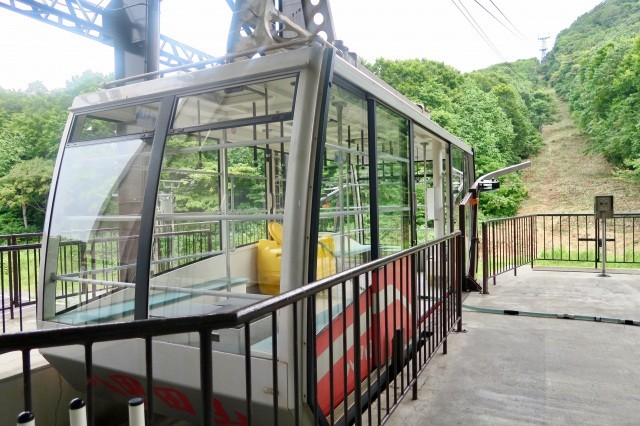
The 2.5km Hakkoda Ropeway offers superb views of the natural scenery of the Hakkoda Mountain Range as it climbs 650m up Mount Tamoyachi. Seasonal spectacles include fresh verdant greens in mid-May, pretty alpine flowers from mid-May to mid-August, vibrant autumnal colours from late September to mid-October and brilliant hoar frosts in January and February. Year-round skiing is available with the best conditions available from late November to mid-May.
Visitors can enjoy panoramic views stretching as far as the city of Aomori, Mutsu Bay, Tsugaru Peninsula, Shimokita Peninsula and Mount Iwaki on fine days.
The ropeway runs throughout the year. A 10-minute ride takes visitors to Summit Park station at the top of Mount Tamoyachi. The surrounding area is dotted with ponds and marshes and is home to a variety of alpine plants. A range of trails is available for trekkers of all levels from a 30-minute walking path to a challenging 4-hour climbing course.
After a long walk, relax in a hot spring bath with 300 years of history at Sukayu Onsen. There are mountain trails leading to Sukayu Onsen from Summit Park station. Be sure to wear trainers or climbing boots to follow these trails. A walk along the Kenashi Paradise Line takes 2 hours and 30 minutes and a trek along the Odake Climbing Course takes 4 hours.
A thematic journey in the Tohoku region:Snowmelt
Visitors can enjoy panoramic views stretching as far as the city of Aomori, Mutsu Bay, Tsugaru Peninsula, Shimokita Peninsula and Mount Iwaki on fine days.
The ropeway runs throughout the year. A 10-minute ride takes visitors to Summit Park station at the top of Mount Tamoyachi. The surrounding area is dotted with ponds and marshes and is home to a variety of alpine plants. A range of trails is available for trekkers of all levels from a 30-minute walking path to a challenging 4-hour climbing course.
After a long walk, relax in a hot spring bath with 300 years of history at Sukayu Onsen. There are mountain trails leading to Sukayu Onsen from Summit Park station. Be sure to wear trainers or climbing boots to follow these trails. A walk along the Kenashi Paradise Line takes 2 hours and 30 minutes and a trek along the Odake Climbing Course takes 4 hours.
A thematic journey in the Tohoku region:Snowmelt
Sukayu Hot spring
Touji Inn in Hakkouda
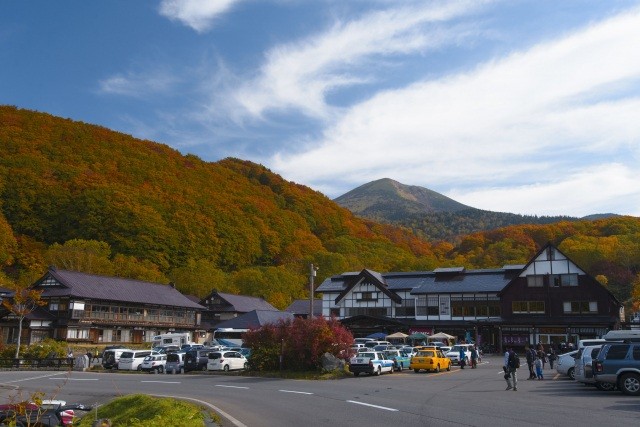
Sukayu Onsen is located in Towada-Hachimantai National Park. It was designated as “National Recreational Hot Spring Resort No. 1” in 1954 in recognition of its outstanding hot spring benefits, abundant spring water, spacious accommodations, pure natural environment, convenient transportation, and low rates. The famous “Hiba Senninburo” baths are 160 tatami in size, and the culture of mixed bathing still exists today (women-only hours are available in the morning and evening). A variety of rooms are available, from quaint Touji rooms to Western-style rooms with beds, where you can relax and unwind from the daily grind.
The Hakkoda Ropeway is located in the vicinity of Sukayu, where you can enjoy the magnificent nature of Hakkoda (Hakkoda mountain range) and enjoy the spectacular view that changes with each season: fresh greenery in spring, alpine flora in summer, autumn leaves in fall, and tree ice in winter. The Hakkoda ropeway is open from mid-May for fresh green leaves, August for summer skiing, late September to mid-October for autumn leaves, late November to mid-May for winter skiing, and January to late February for juhyo (ice covered trees).
Hakkoda is the general name for the mountain range in the northern part of Towada-Hachimantai National Park, consisting of more than 10 peaks with the main peak, Hakkoda-dake, at the center. The area is crowded with climbers from spring through fall, as wetlands are found everywhere and the area is a treasure trove of alpine flora.
Like Sangayu Onsen, Jogakura Bridge is located in Towada-Hachimantai National Park. With a total length of 360 meters and arch span of 255 meters, it is Japan's largest upper arch bridge. The view of the Jogakura Stream from a height of approximately 120 meters is beautifully colored in autumn, with the trees overlapping each other, providing a magnificent view of the Hakkouda mountain range throughout the four seasons.
The Hakkoda Ropeway is located in the vicinity of Sukayu, where you can enjoy the magnificent nature of Hakkoda (Hakkoda mountain range) and enjoy the spectacular view that changes with each season: fresh greenery in spring, alpine flora in summer, autumn leaves in fall, and tree ice in winter. The Hakkoda ropeway is open from mid-May for fresh green leaves, August for summer skiing, late September to mid-October for autumn leaves, late November to mid-May for winter skiing, and January to late February for juhyo (ice covered trees).
Hakkoda is the general name for the mountain range in the northern part of Towada-Hachimantai National Park, consisting of more than 10 peaks with the main peak, Hakkoda-dake, at the center. The area is crowded with climbers from spring through fall, as wetlands are found everywhere and the area is a treasure trove of alpine flora.
Like Sangayu Onsen, Jogakura Bridge is located in Towada-Hachimantai National Park. With a total length of 360 meters and arch span of 255 meters, it is Japan's largest upper arch bridge. The view of the Jogakura Stream from a height of approximately 120 meters is beautifully colored in autumn, with the trees overlapping each other, providing a magnificent view of the Hakkouda mountain range throughout the four seasons.
Day2
Towada Art Center
Public art everywhere! The entire street is an open-air museum
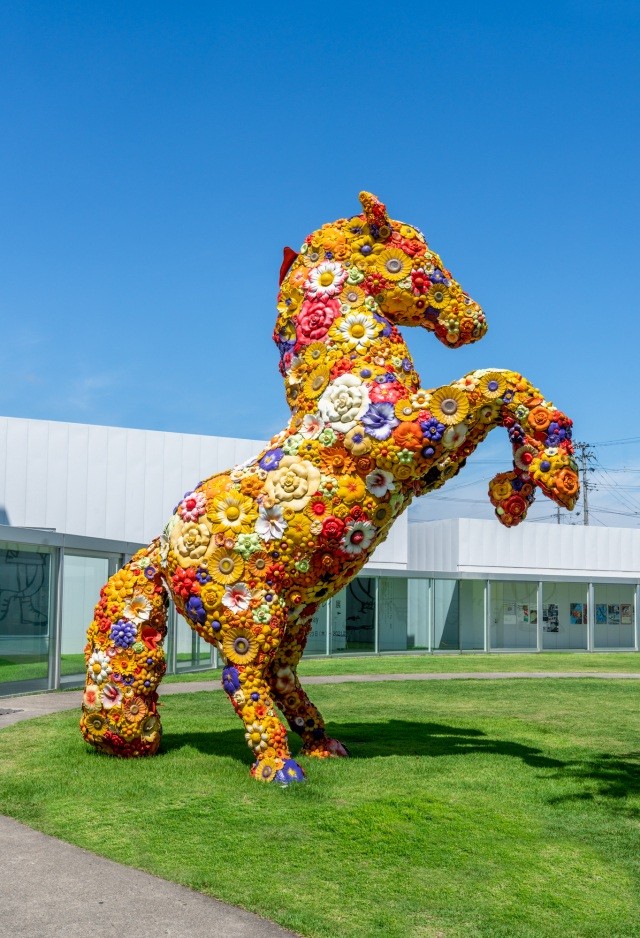
Arts Towada is a project based on the concept of developing the outside space along Kanchogai Avenue as a museum by putting a variety of art work on display. Kanchogai is a main road in the city and is dotted with fanciful public art.
As part of this art project, the museum's exhibition spaces have large glass openings that create a sense that the artworks are exhibited for the city outside as well. Permanent works of Japanese and foreign artists who are active in the field of contemporary art are located not only in the exhibition rooms of the museum but also in various places such as courtyards, rooftops, and staircases.
As part of this art project, the museum's exhibition spaces have large glass openings that create a sense that the artworks are exhibited for the city outside as well. Permanent works of Japanese and foreign artists who are active in the field of contemporary art are located not only in the exhibition rooms of the museum but also in various places such as courtyards, rooftops, and staircases.
Lake Towada
A mystical deep blue lake reflecting blue skies and the surrounding mountains on its surface
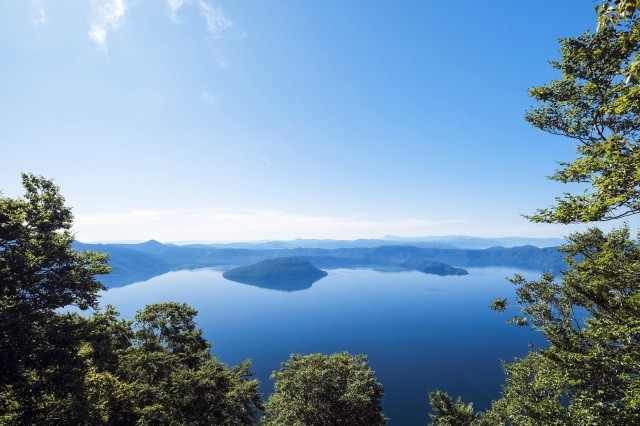
The mystical Lake Towada offers beautiful panoramic views reflecting the surrounding scenery of blue skies, verdant greens and a riot of autumnal colours on its serene surface.
Located in the Towada-Hachimantai National Park, Lake Towada is a crater lake rimmed by the crater’s mountainous edge and is the source of the Oirase Mountain Stream. The lake is 46km in circumference and has a maximum depth of 327m making it the third deepest in Japan. Crater lakes are topographic depressions formed by massive volcanic eruptions and subsequently filled with rain water over long periods of time. Come and be overwhelmed by this creation of enormous volcanic energy and its million years of history! The lake is known as the “Mystic Lake” as it never freezes during winter despite its location in Japan’s northern highlands.
The lake is surrounded by a natural grove of mainly beech trees. The seasonal scenery is enchanting with spring flowers, verdant summer greens, vibrant autumnal colours and winter woods blanketed with snow. The best time to enjoy verdant greens is from May to June while autumn leaves are at their best from mid to late October. Visitors can also enjoy canoeing and pleasure boat rides from April to November. Icicles and frozen waterfalls can be seen while enjoying a winter walk in snowshoes or snow ramblers (a kind of free-heel ski) from January to March.
Located on the Nakayama Peninsula jutting out into Lake Towada, Towada Shrine is a spiritual place worshipping the dragon god of water. Legend has it that a trainee monk who defeated a dragon was enshrined here as an incarnation of the blue dragon.
Visitors should be sure to enjoy the local specialties of kokanee salmon and pond smelt as well as some of the locally produced wines!
Located in the Towada-Hachimantai National Park, Lake Towada is a crater lake rimmed by the crater’s mountainous edge and is the source of the Oirase Mountain Stream. The lake is 46km in circumference and has a maximum depth of 327m making it the third deepest in Japan. Crater lakes are topographic depressions formed by massive volcanic eruptions and subsequently filled with rain water over long periods of time. Come and be overwhelmed by this creation of enormous volcanic energy and its million years of history! The lake is known as the “Mystic Lake” as it never freezes during winter despite its location in Japan’s northern highlands.
The lake is surrounded by a natural grove of mainly beech trees. The seasonal scenery is enchanting with spring flowers, verdant summer greens, vibrant autumnal colours and winter woods blanketed with snow. The best time to enjoy verdant greens is from May to June while autumn leaves are at their best from mid to late October. Visitors can also enjoy canoeing and pleasure boat rides from April to November. Icicles and frozen waterfalls can be seen while enjoying a winter walk in snowshoes or snow ramblers (a kind of free-heel ski) from January to March.
Located on the Nakayama Peninsula jutting out into Lake Towada, Towada Shrine is a spiritual place worshipping the dragon god of water. Legend has it that a trainee monk who defeated a dragon was enshrined here as an incarnation of the blue dragon.
Visitors should be sure to enjoy the local specialties of kokanee salmon and pond smelt as well as some of the locally produced wines!
Towada Oyu Onsen
The southern entryway to tourism in Towada
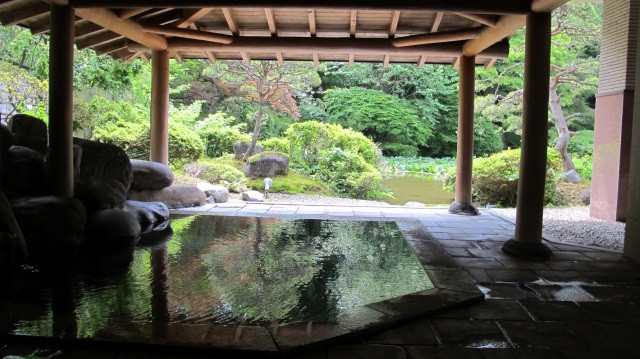
Located south of Lake Towada, Oyu Onsen is a hot springs area that naturally sprang forth along the Oyu River 800 years ago. It is an optimal area for tourism that includes Lake Towada. It has traditional hot springs that are not separated by gender, and the stinging hot water is said to be effective for recovery from weariness and against poor circulation.
The Oyu Bon Odori, the Oyu Onsen Summer Festival that includes a fireworks display, and the Oyu Odaiko Matsuri with over 50 drumming groups are held as festivals to enjoy the short summers in northern Japan. In winter, in addition to games such as treasure hunting in the snow, playing tug of war, and going “hip skiing,” the Oyu Onsen Winter Festival is held to enjoy drinking sake and other activities in Kamakura snow huts that are unique to the snow country of northern Japan.
A thematic journey in the Tohoku region:Hot springs
The Oyu Bon Odori, the Oyu Onsen Summer Festival that includes a fireworks display, and the Oyu Odaiko Matsuri with over 50 drumming groups are held as festivals to enjoy the short summers in northern Japan. In winter, in addition to games such as treasure hunting in the snow, playing tug of war, and going “hip skiing,” the Oyu Onsen Winter Festival is held to enjoy drinking sake and other activities in Kamakura snow huts that are unique to the snow country of northern Japan.
A thematic journey in the Tohoku region:Hot springs
Day3
Tour the bustling Hachinohe Morning Market
Eat a fresh and tasty seafood breakfast in the Morning Market in Hachinohe City, Aomori Prefecture!
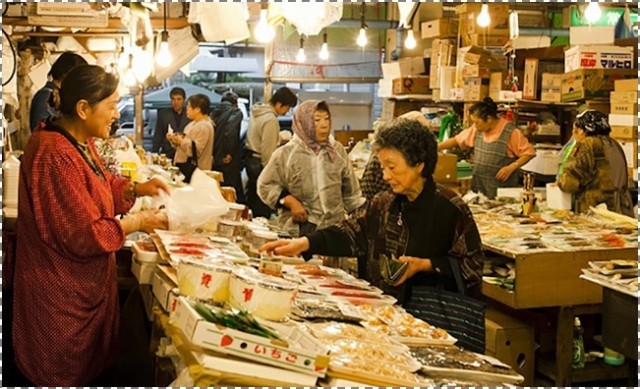
A guide will meet you at the hotel at 7:00 AM, or at 6:00AM on Sunday, and will take you out to a morning market together. Visit the Mutsuminato Station Morning Market year-round on weekdays, known as the kitchen of Hachinohe, or go to the Tatehana Wharf Fishing Port Morning Market, the largest in Japan, on Sundays from April through December. At the Mutsuminato Station Morning Market, you can make your own unique asaichi gohan breakfast by purchasing slices of sashimi and side dishes to go on top of a bowl of rice, eaten with a side of miso soup. At the Tatehana Wharf Fishing Port Morning Market, you'll walk through the stalls to eat not only the seafood of Hachinohe, but also a dazzling array of other foods which are low priced, high volume, and remarkably fresh — only available at this morning market. Going around with your guide acting as an interpreter you'll have so much fun interacting with the locals.
Sanriku Fukko (reconstruction) National Park Tanesashi Coast
Enjoy the varied and scenic coast of this 30-minute paradise from the city with all your senses!
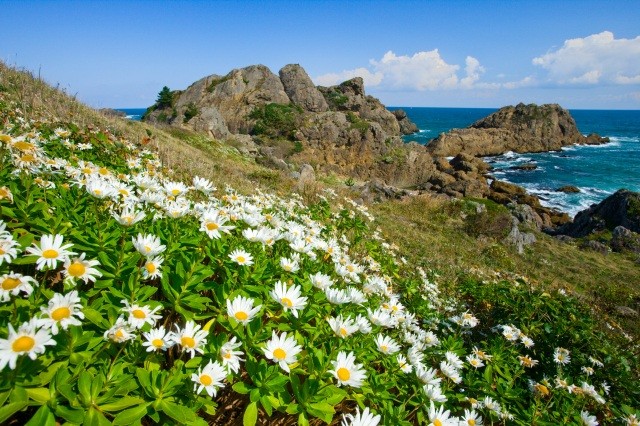
Among the Sanriku Reconstruction National Parks created on May 24, 2013 to contribute to the reconstruction of the Sanriku area damaged by the Great East Japan Earthquake, Tanesashi Coast is said to be a treasure trove of spectacular scenery.It is also certified for excellence by Trip Advisor. With over 650 species of native plants, it is also known as the "flowery shore" where flowers bloom from early summer to autumn. The 12-kilometer-long coastline is sprinkled with one-of-a-kind sights, including Kaburajima Island, a breeding ground for petrels, the beautifully scenic Ashigezaki Observatory, and a natural grassy area along the sea.The splendor of the area has been loved by writers and artists such as Hatsusaburo Yoshida, a painter of bird's-eye views, and Kaii Higashiyama, a Japanese painter, who left many works of art related to Tanegashi.
≪Ashigezaki Observatory≫ This observatory is located at the tip of the cape. It is said to have been used to monitor foreign ships in the closing days of the Tokugawa Shogunate and by the Japanese military during the Pacific War, and is now a place of scenic beauty that people can enjoy today.≪Nakasuga≫ There is a promenade along the reef cove. The mountain stream has made the promenade more enjoyable to stroll along, with many plants that bloom only in high mountains.≪Kamanokuchi≫ It is called Kamanokuchi because there is a rock in the shape of a large cauldron in the sea in the cove.≪Osuga Beach≫ A beach with precious squeaking sand. The 2.3-kilometer-long white sand beach is the largest beach in Tohoku where visitors can take a walk.≪You can experience "squeaking sand" on the beach of Oosuga Beach, which makes a "squeak, squeak" sound when the sand is rubbed. This sound is made when quartz grains of sand with their corners removed are clean and dry.≪Shiraiwa≫It is called Shiraiwa because it is whitened by cormorant droppings. The contrast between the blue of the sea and sky and the green of the pine grove is beautiful.≪Yodo no Matsubara≫ A promenade lined with pine trees more than 100 years old. The rugged beauty of the coast can be seen through the trees.≪The terrace covered with natural grass extends all the way to the edge of the waves, offering an open landscape with a view of the Pacific Ocean. Rocky mountains appear as far as Ohkuki at the southern end.
≪Ashigezaki Observatory≫ This observatory is located at the tip of the cape. It is said to have been used to monitor foreign ships in the closing days of the Tokugawa Shogunate and by the Japanese military during the Pacific War, and is now a place of scenic beauty that people can enjoy today.≪Nakasuga≫ There is a promenade along the reef cove. The mountain stream has made the promenade more enjoyable to stroll along, with many plants that bloom only in high mountains.≪Kamanokuchi≫ It is called Kamanokuchi because there is a rock in the shape of a large cauldron in the sea in the cove.≪Osuga Beach≫ A beach with precious squeaking sand. The 2.3-kilometer-long white sand beach is the largest beach in Tohoku where visitors can take a walk.≪You can experience "squeaking sand" on the beach of Oosuga Beach, which makes a "squeak, squeak" sound when the sand is rubbed. This sound is made when quartz grains of sand with their corners removed are clean and dry.≪Shiraiwa≫It is called Shiraiwa because it is whitened by cormorant droppings. The contrast between the blue of the sea and sky and the green of the pine grove is beautiful.≪Yodo no Matsubara≫ A promenade lined with pine trees more than 100 years old. The rugged beauty of the coast can be seen through the trees.≪The terrace covered with natural grass extends all the way to the edge of the waves, offering an open landscape with a view of the Pacific Ocean. Rocky mountains appear as far as Ohkuki at the southern end.
GOAL
